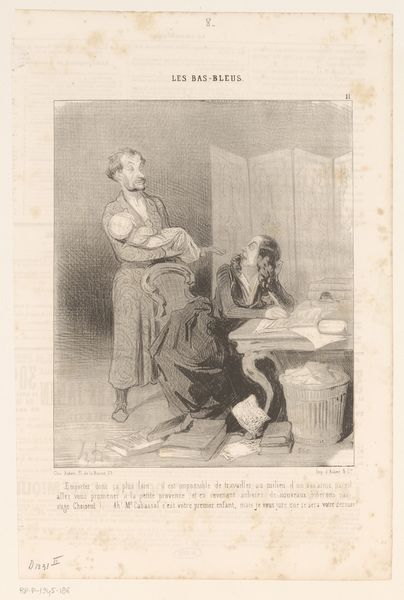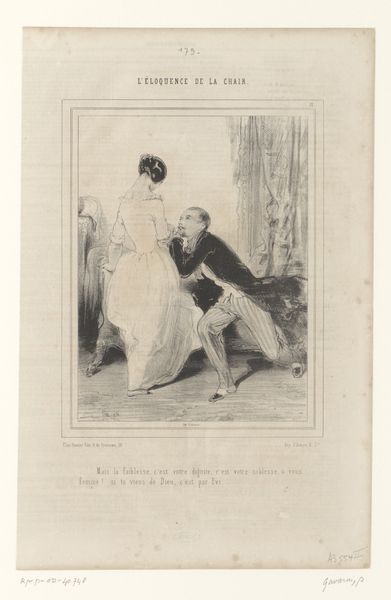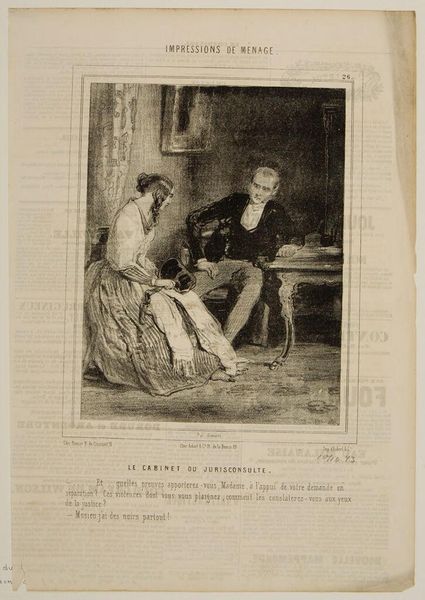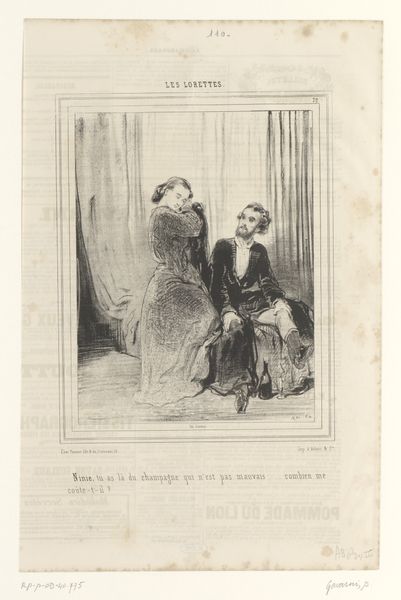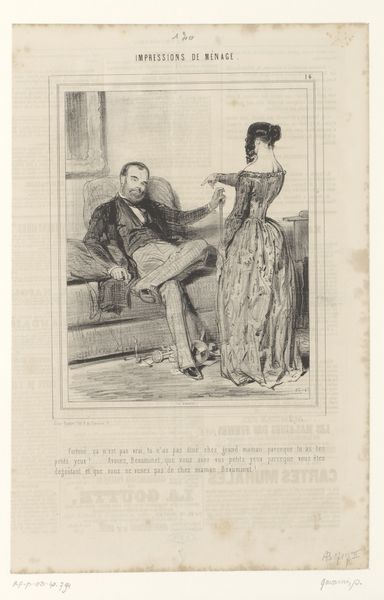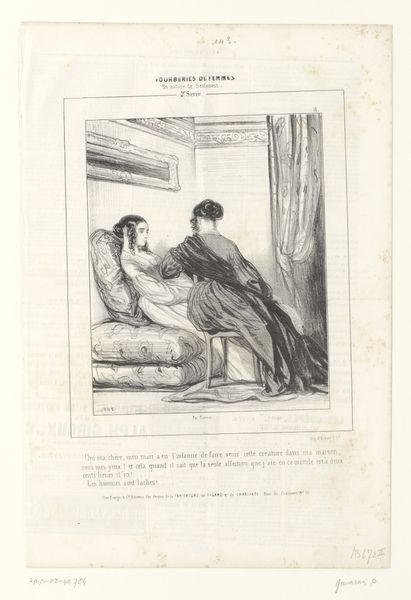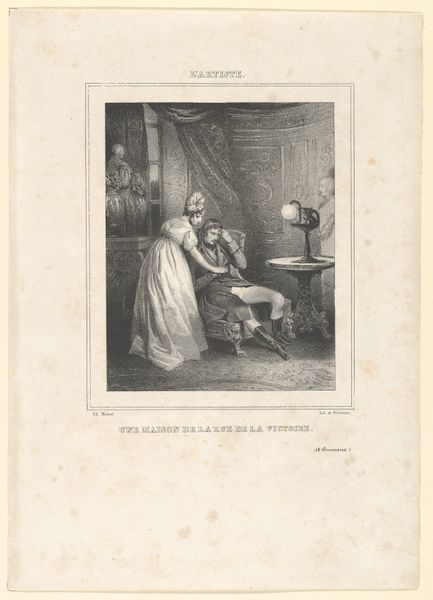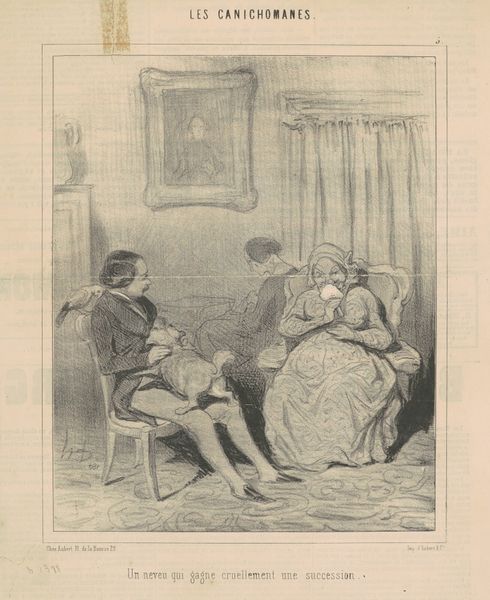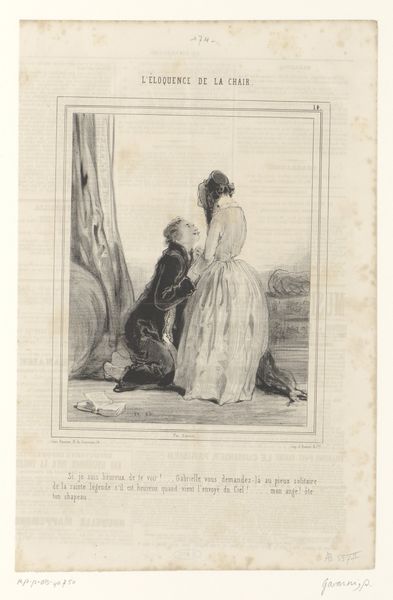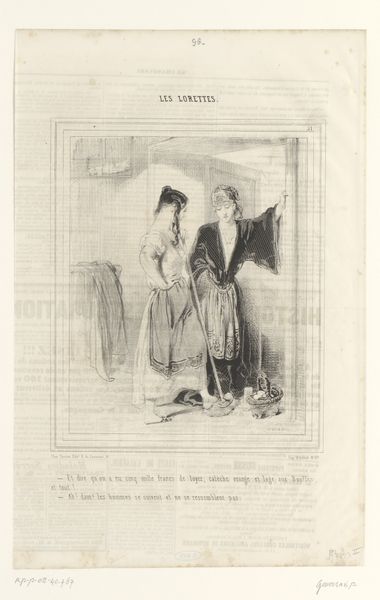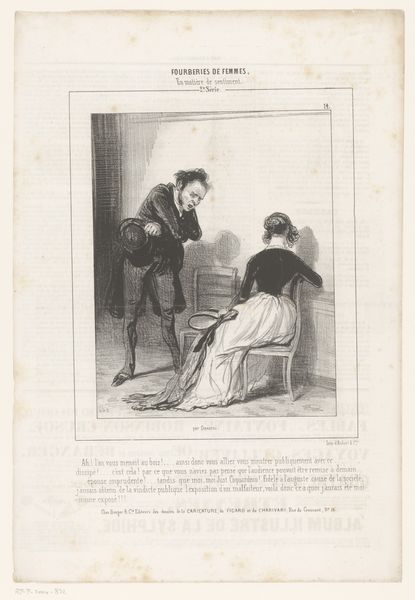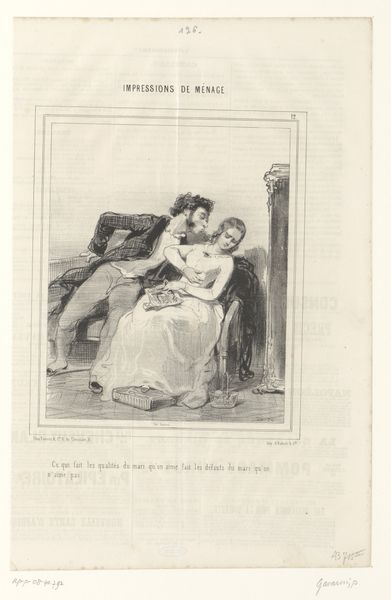
lithograph, print
#
portrait
#
lithograph
# print
#
figuration
#
genre-painting
#
realism
Dimensions: height 363 mm, width 237 mm
Copyright: Rijks Museum: Open Domain
Curator: Here we have Paul Gavarni’s lithograph from 1843, "Vrouw vraagt echtscheiding aan bij advocaat," housed at the Rijksmuseum. A woman seeking a divorce. What's your first take on it? Editor: Bleak, I would say, somber. The grayscale only amplifies the somber mood, with very stark light and shadow play. And there's a clear asymmetry to the composition; the woman looks slumped and defeated, while the man, presumably the lawyer, sits rigidly upright. Curator: Gavarni was a master of social observation through his lithographs. You can consider this within the historical context of 19th-century Paris, where social commentary flourished in printed media, accessible to a broader public beyond painting’s elite circles. Gavarni critiqued bourgeois values by highlighting the emotional and material struggles faced by individuals within the confines of marriage and law. Editor: Looking at it formally, Gavarni uses line and hatching quite effectively to create texture and volume. Notice how the dress is full of detailed folds but its overall effect serves to make her disappear as much as possible within its drapery. Semiotically speaking, we might see the desk and its rigid lines and heavy presence as the imposing institution of the law. The setting amplifies a narrative of institutionalized oppression, not just the particulars of her specific narrative. Curator: Indeed. Gavarni’s lithography challenges our understanding of what constitutes ‘art’ – the means of production, using lithographic stones, allowing for reproductions and broader distribution, disrupts traditional ideas of uniqueness and authenticity. The accessibility allowed these works to circulate amongst a wider, increasingly literate populace hungry for reflections of their own societal realities, and for satirical critiques of societal problems such as domestic misery and marital discord. Editor: It strikes me that, through form, the stark contrast furthers that notion of societal conflict between the institution that is the Law and the actual reality and details of real lives being lived outside that setting. In its emphasis of light, form, and structure, it delivers the overall mood, the narrative. Curator: A mass produced object about a domestic setting meant for a bourgeois public, speaks to an audience of potential divorcees and, at a time when divorce laws were restrictive and inequitable, reveals a very gendered landscape of injustice and human suffering in an increasingly industrialized society. It’s a stark reminder of how art both reflects and shapes social change. Editor: And the form follows that function—a really fascinating visual encounter when considering its cultural footprint. Curator: Absolutely; a poignant look at history and the complex making of that moment for that person and their society.
Comments
No comments
Be the first to comment and join the conversation on the ultimate creative platform.
